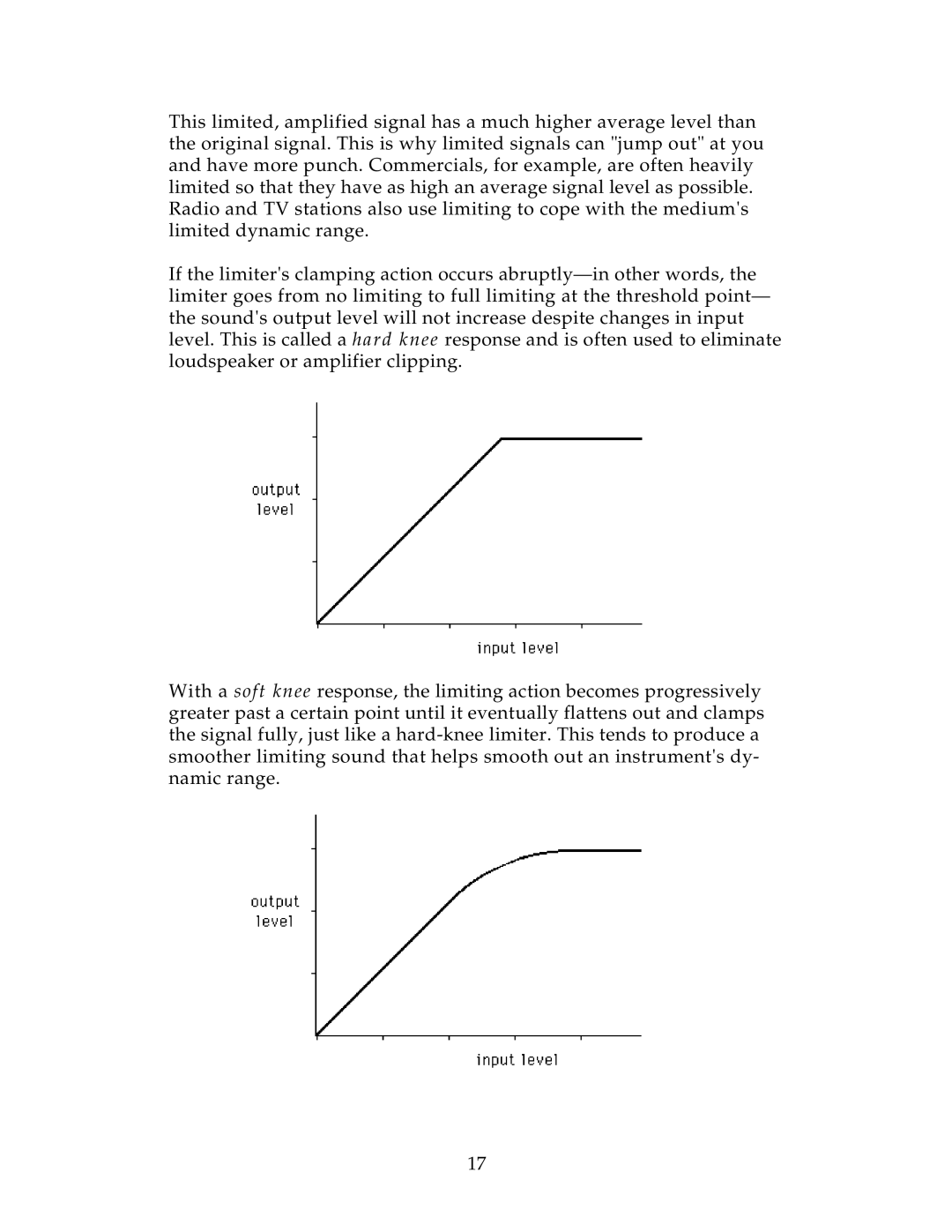
This limited, amplified signal has a much higher average level than the original signal. This is why limited signals can "jump out" at you and have more punch. Commercials, for example, are often heavily limited so that they have as high an average signal level as possible. Radio and TV stations also use limiting to cope with the medium's limited dynamic range.
If the limiter's clamping action occurs
With a soft knee response, the limiting action becomes progressively greater past a certain point until it eventually flattens out and clamps the signal fully, just like a
17
